Liknande ämnen
[Windows 11/10] Troubleshooting - System is running slowly
Applicable Products: Notebook, Desktop, All-in-One PC, Gaming Handheld, Motherboard, Graphics card, LCD Monitor, MiniPC
After using Windows for a certain time, you might start noticing the system is slowing down. In this article, you can find tips that may help you solve the issue and make your device run smoothly and fast again.
Note: The device hardware specifications such as CPU frequency, insufficient memory, or using HDD instead of SSD may be some of the reasons for the system slowing down.
Note: Whether the device is connected to the power supply (AC adapter) may affect performance. We recommend that you connect the power supply to the device for an optimal performance experience.
To provide you more detailed instruction, you can also click ASUS YouTube video link below to know more about What to do if the system is running slowly.
https://www.youtube.com/watch?v=QGChUiZG82o
Table of Contents:
Remove accessories and update BIOS & Windows Update
Start by following the steps below:
- Disconnect all accessories and peripherals, such as external hard drives, printers, dongles, and remove memory cards, CD/DVDs, etc.
- Regularly updating BIOS, Windows, and drivers can enhance system stability and performance. Ensure that your device is using the latest versions. Learn more about updating BIOS:
How to update the BIOS version in Windows system
How to use EZ Flash to update the BIOS version
(For desktop products, please refer to ASUS Motherboard EZ Flash 3 Introduction.)
Learn more about updating Windows and drivers:
How to execute Windows Update
How to update drivers via System Update in MyASUS
If the problem persists after you updating BIOS/Windows packages/drivers, please continue to the next chapter for troubleshooting.
Select the appropriate Power mode (Fan mode)
Power mode (Fan mode) allows you to choose the suitable working method based on your needs between system performance and power consumption. If you feel the system is running slowly, you may try to increase the power mode (fan mode) to meet your usage requirements.
Note: For gaming computers (ROG/TUF series), please refer to the Armoury Crate introduction for fan adjustment.
Note: For gaming handheld, please refer to the Armoury Crate SE Introduction for fan adjustment.
Note: For ProArt series, please refer to the ProArt Creator Hub introduction for fan adjustment.
- Type and search [MyASUS] in the Windows search bar①, then click on [Open]②.
Note: If you cannot find MyASUS, it may not be installed on your device. Refer to How to install MyASUS.
- In the MyASUS app, click [Device Settings]③.
Note: If your device does not display the Device Settings page in MyASUS software, it means your device does not support this feature. You can Change power mode and plan in Windows. Here you can learn more about Why can I only see the partial features in the MyASUS app.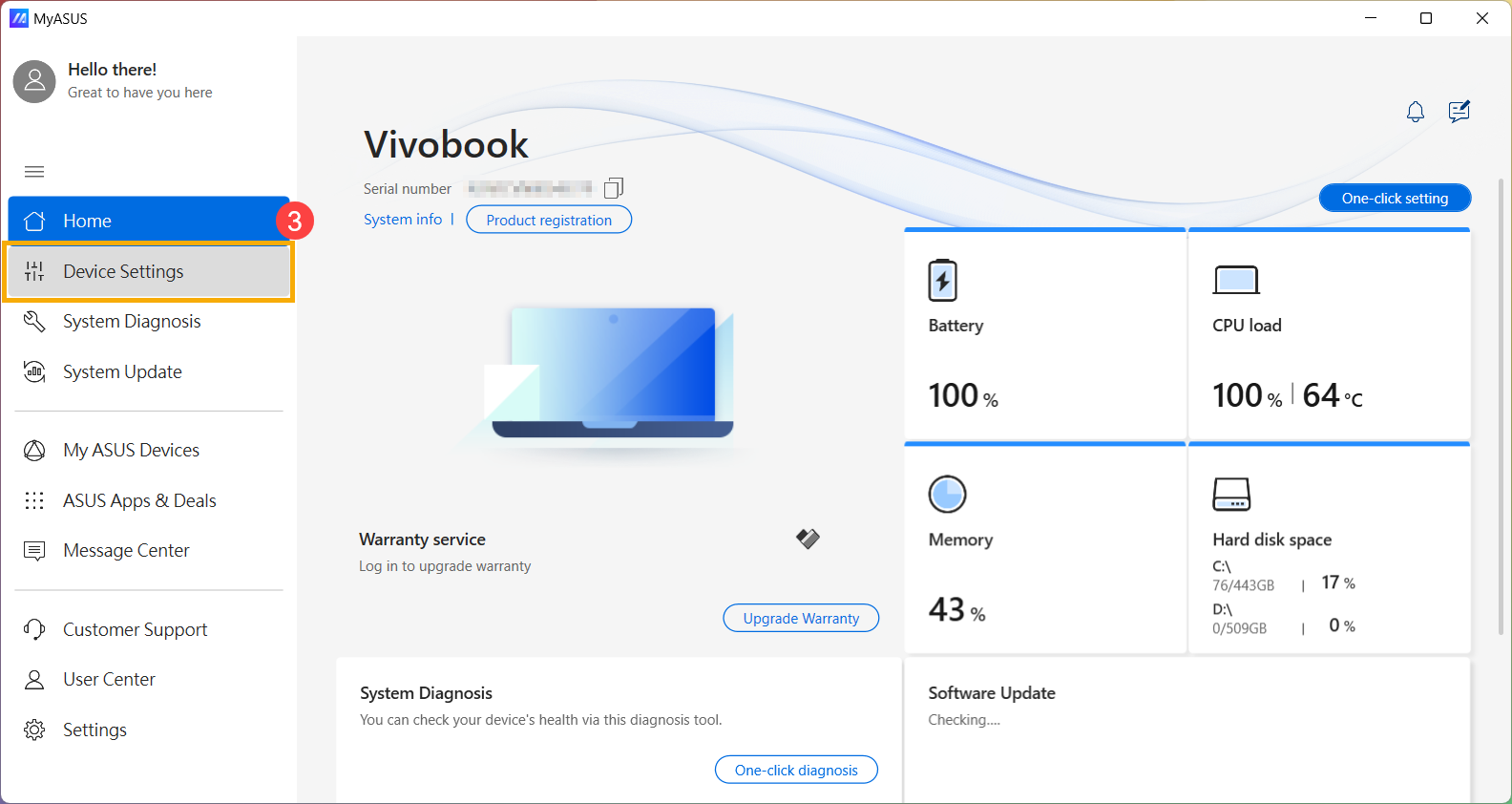
- Locate [ASUS Intelligent Performance Technology]④, and choose the appropriate mode based on your usage scenario. Learn more about MyASUS Device Settings introduction.
Note: Some models may not display 「ASUS Smart Performance Technology」 but instead show 「Fan Mode」.
Note: Available modes may vary depending on the model.
- If problems persist, please continue to the next chapter for troubleshooting.
Run System diagnosis to check Hardware
- Execute system diagnosis via MyASUS. Read the following article to learn how to do it: MyASUS System Diagnosis.
If there is no System Diagnosis tab in MyASUS, your device does not support this function. You can learn more about this here: Why can I only see the partial features in the MyASUS app. - When temperatures of the device is high, the system performance will be reduced. Read this article to solve overhearing issues: Troubleshooting - Overheating and Fan issues.
If problems persist, please continue to the next chapter for troubleshooting.
Check for the programs running in the background
Check if Windows or other programs are updating in the background. Also, make sure to check if antivirus software is running a scan. Finally, check if your download/shared applications are running in the background.
We recommend closing or force-quitting any programs that you are not using at the moment. Learn how to check system performance via Task Manager in this article: How to use Task Manager to check device performance.
If more than one antivirus software, you might be able to uninstall some of them. Please refer to this article: How to check if your device has antivirus software installed. Learn how to uninstall antivirus software in this article: How to remove McAfee which is pre-installed in ASUS device.
In addition, you follow the steps below to check whether Windows Update is running and slowing down your device .
- In the Windows search bar, type in and search [Windows Update settings]①, then click [Open]②.
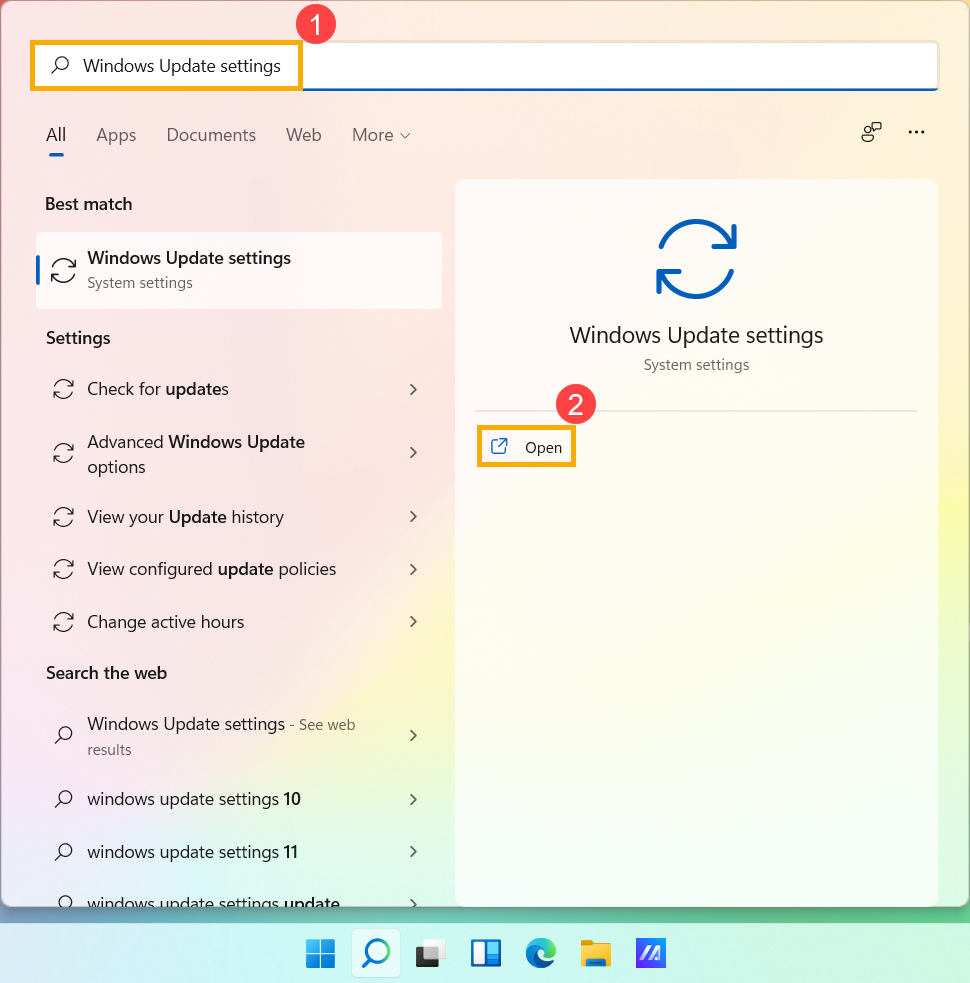
- If a feature update is available or the status says Downloading or Installing, your device may be running slowly due to Windows Update. We recommend you to wait for the update to be completed before taking any action.
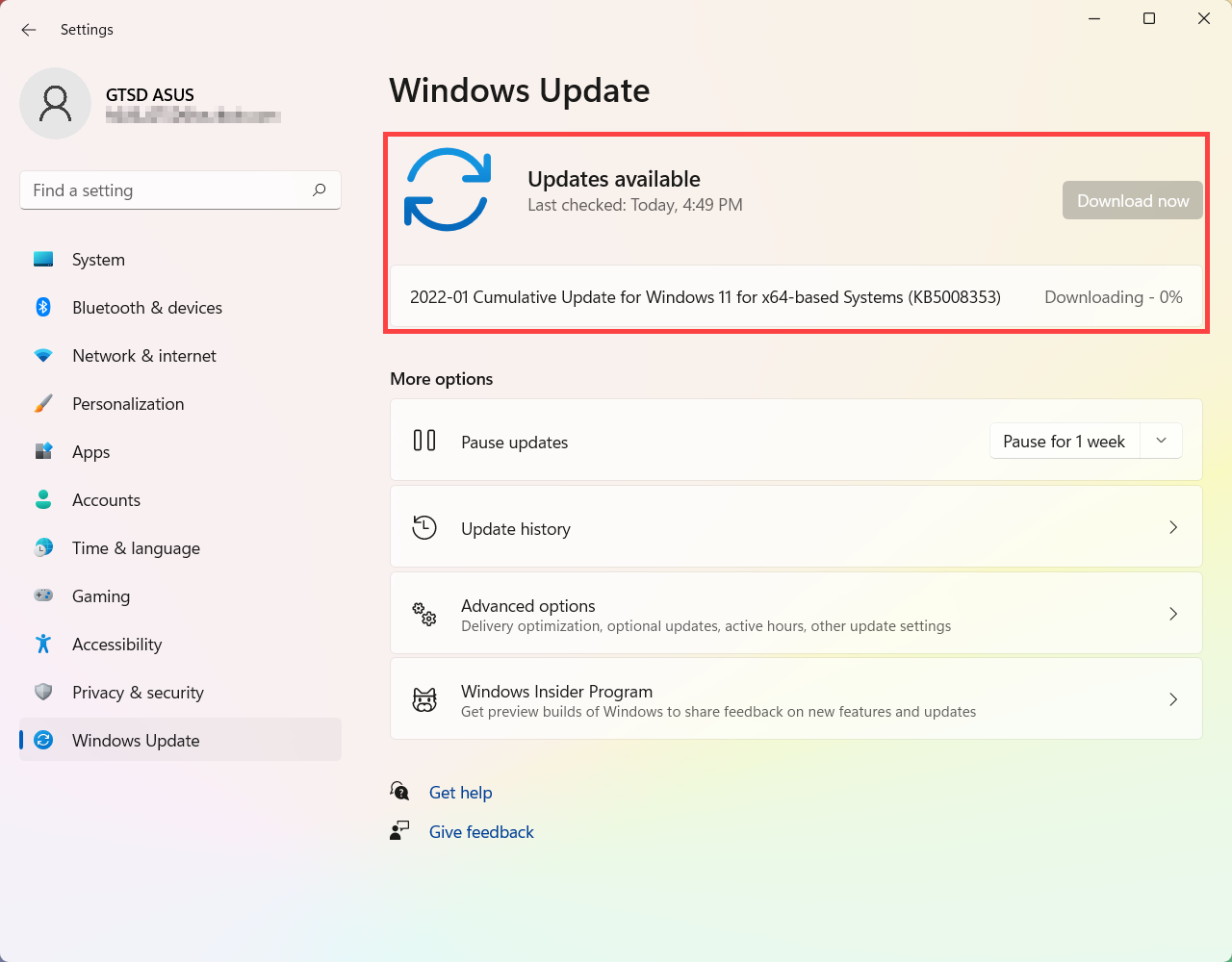
- Some updates may require restarting your device. If you see icon like on the image below in the taskbar, there is a restart pending after completed updates.

In this case, you will see "Restart required" prompt in the Windows Update menu. You can select "Restart now" or "Schedule the restart".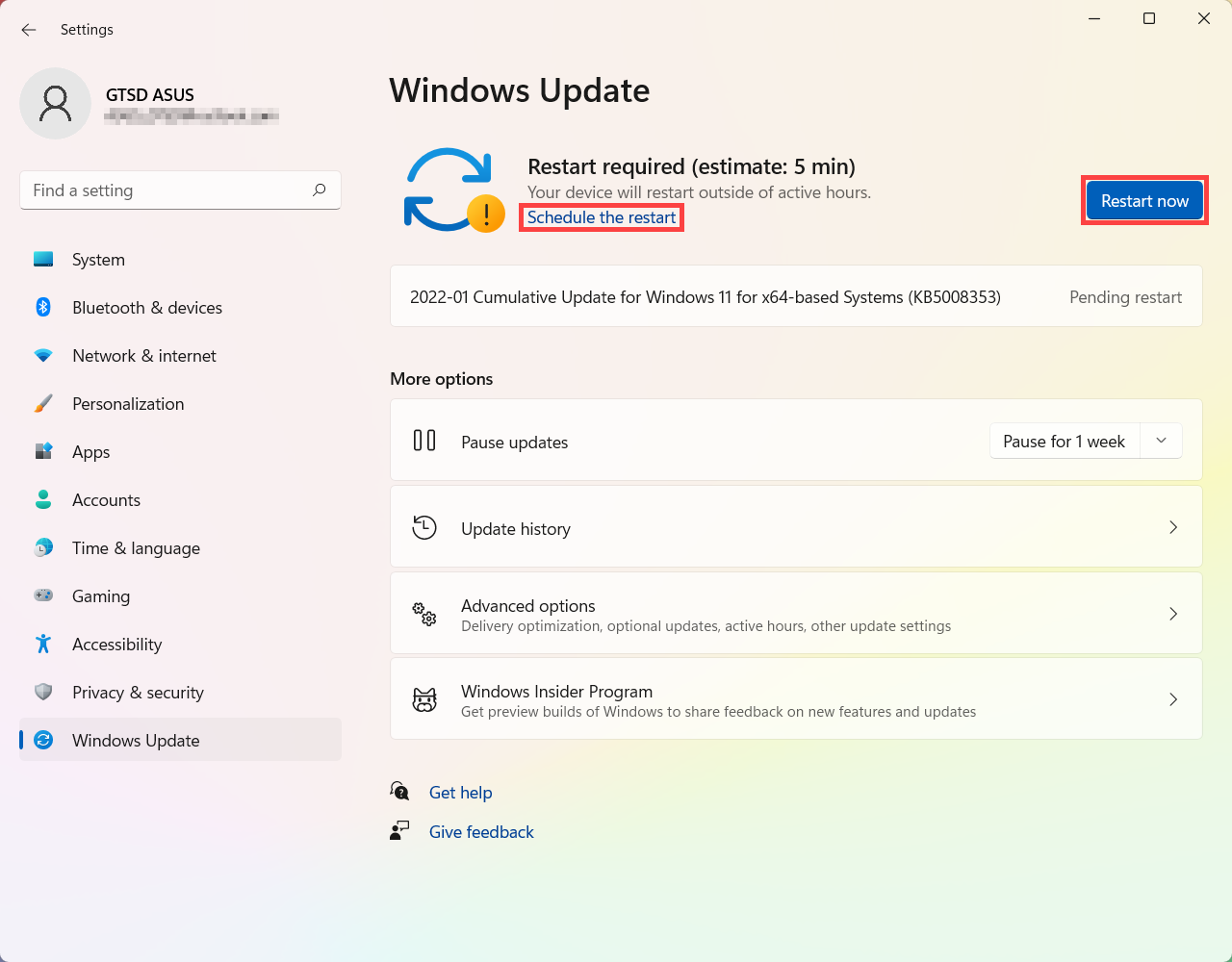
- If problems persist, please continue to the next chapter for troubleshooting.
Remove corrupted applications
Free software, which can sometimes be bundled with malware, can cause the system to slow down. Removing such software help your device return to the normal performance level. Please refer to this article: How to uninstall Apps. If not, we recommend resetting the system.
If the problem does not occur immediately or within a specific timeframe, that can mean a number of problems combined together are slowing down the system. If this occurs, we recommend resetting the system. Visit the links below to learn more about How to reset the system.
Remove system temporary files
When the system disk is running out of space, it can affect the performance and functionality of your system. Please refer to the following instructions to remove the temporary files.
- Click the [Start] icon
 on the taskbar①, and then select [Settings]
on the taskbar①, and then select [Settings] ②.
②. 
- Select [Storage]③.
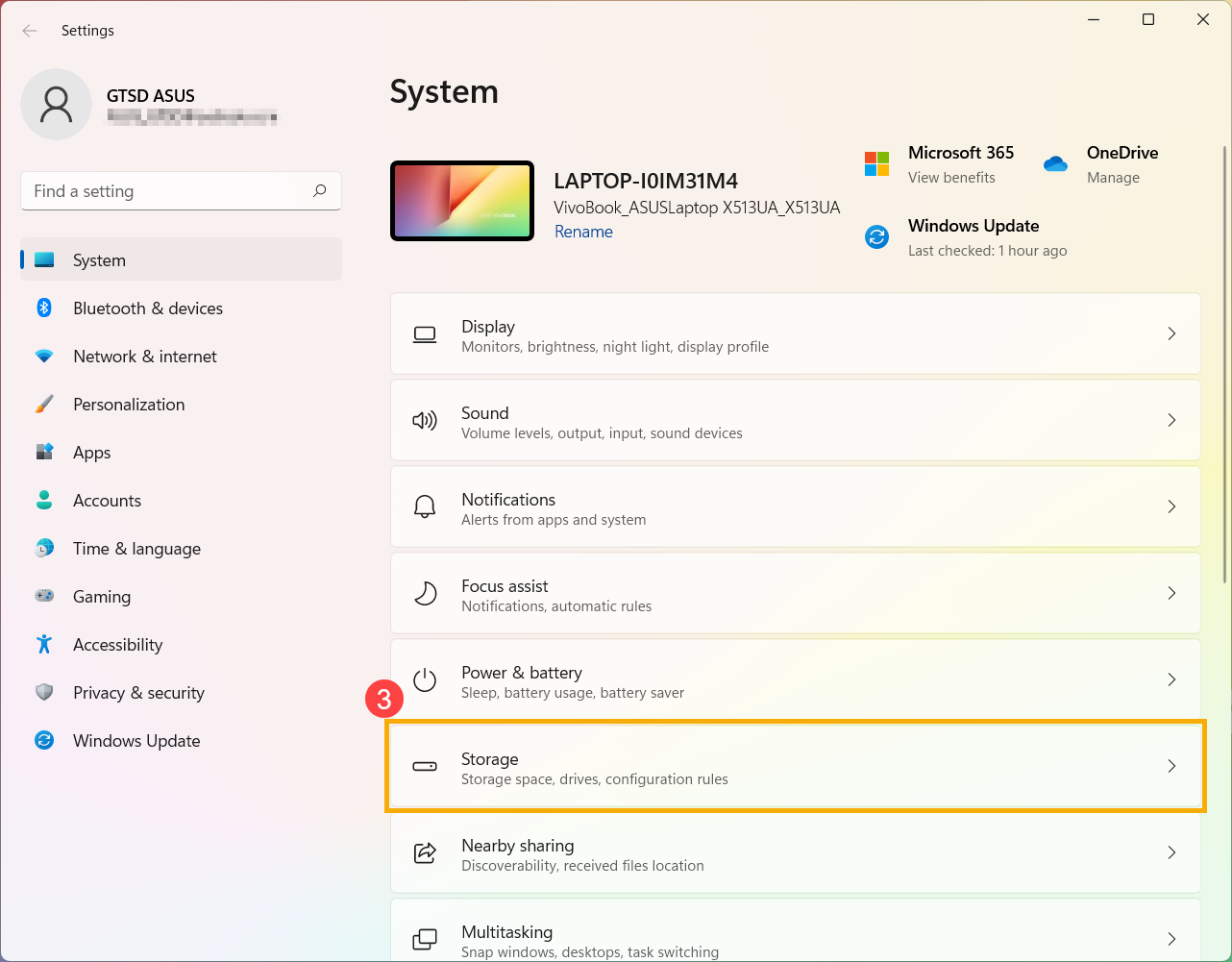
- Select [Temporary files]④.
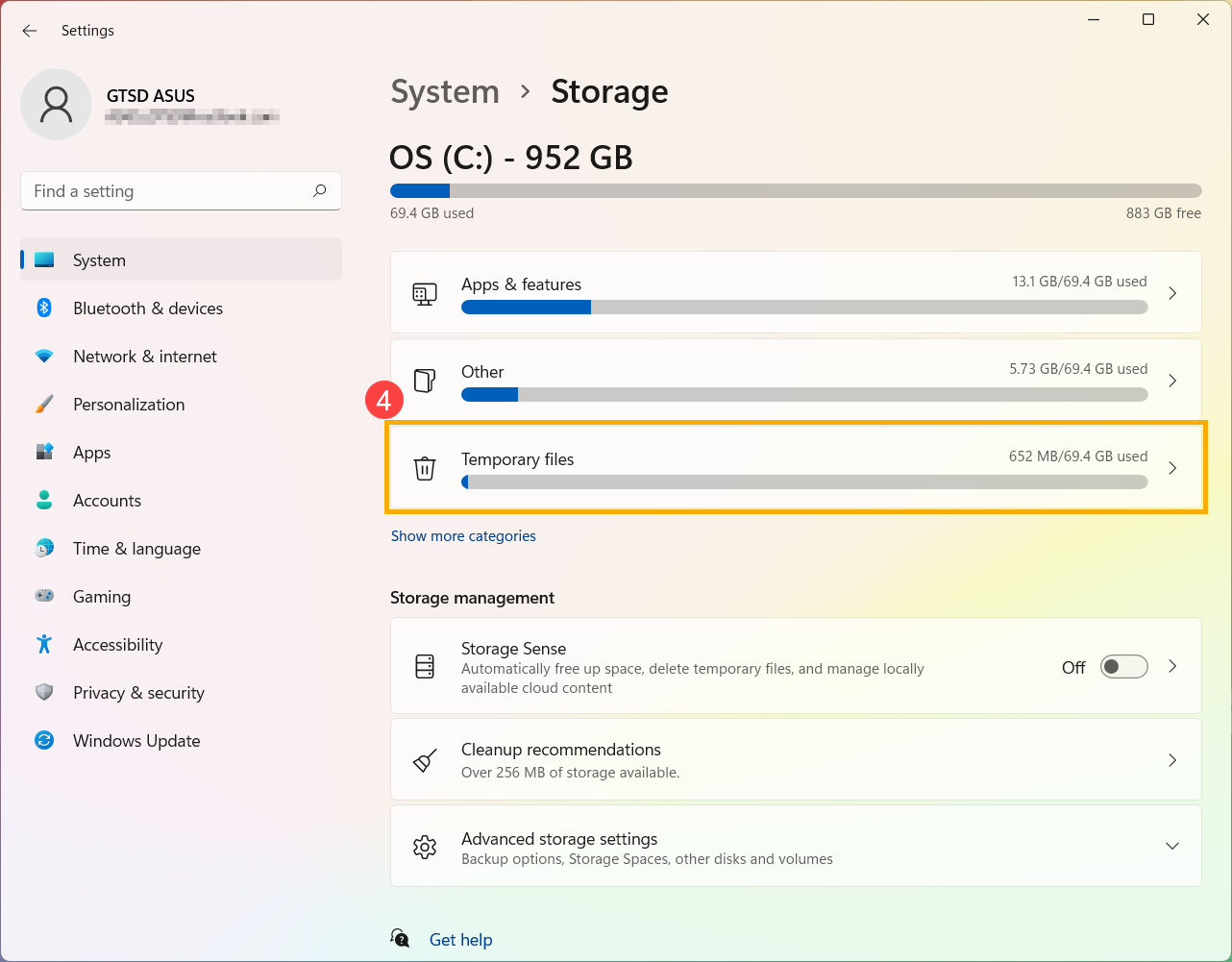
- The system provides a list of files you can remove now. Choose the items you wish to remove⑤, then click [Remove files]⑥.
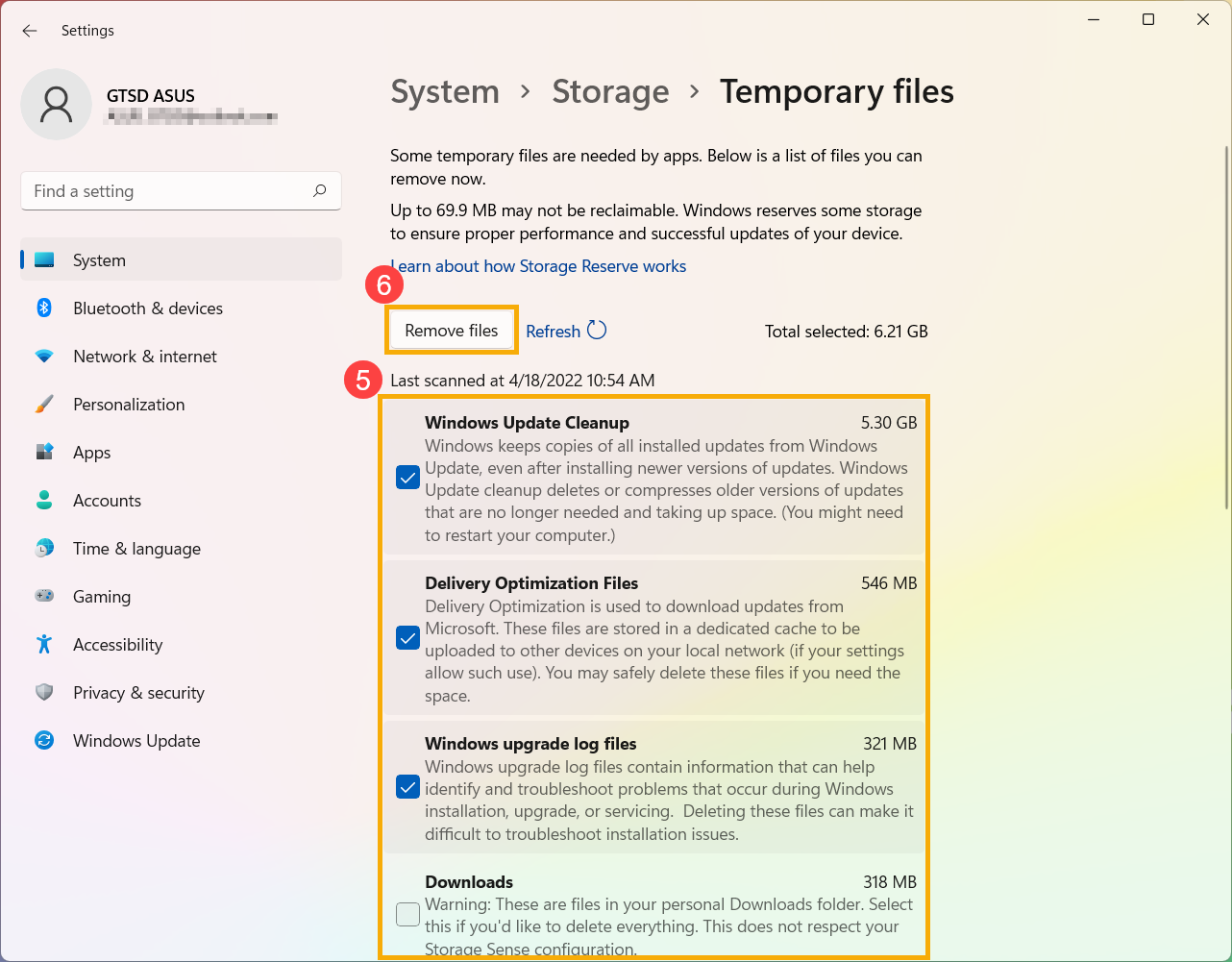
- Click [Continue]⑦ to remove the system temporary files.
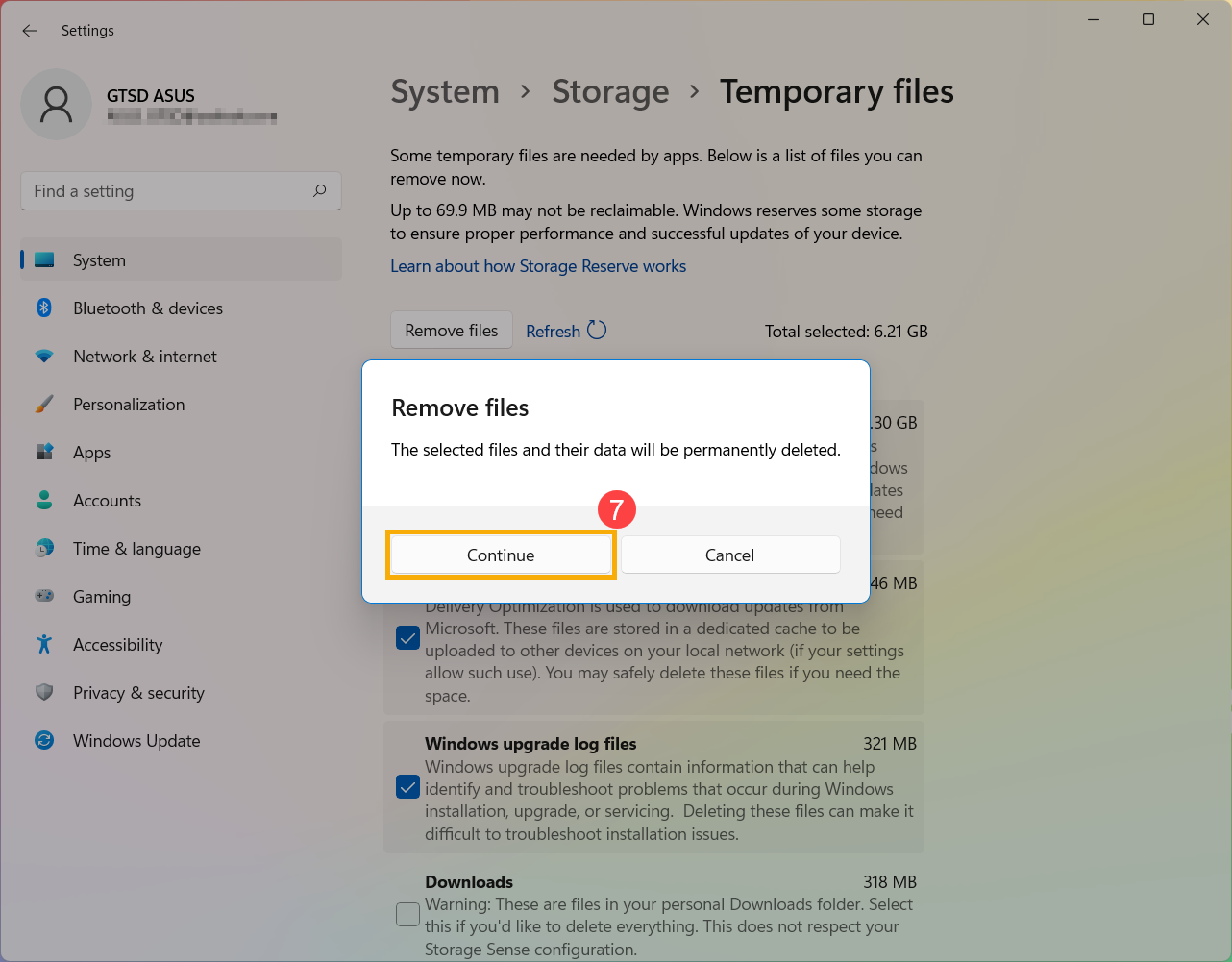
- If problems persist, please continue to the next chapter for troubleshooting.
Improve Windows performance
Please refer to the Microsoft’s recommendation for Windows check and setup via link: Tips to improve PC performance in Windows system.
If problems persist, please continue to the next chapter for troubleshooting.
Restore the system from restore point
If the slow system issue has happened recently, and if you have created a restore point or an automatic system restore is enabled, try to restore the device to a time before the problem began to resolve the problem. You can learn more about restoring the system from restore point via the link: How to use restore point to restore the system.
If problems persist, please continue to the next chapter for troubleshooting.
Reset the PC
If the problem persists after completing all troubleshooting steps listed above, please back up your personal files, then reset the device to back to its factory setting. Visit the links below to learn more about: How to reset the system.
If your issue remains unresolved, please contact the ASUS customer service center for further assistance.